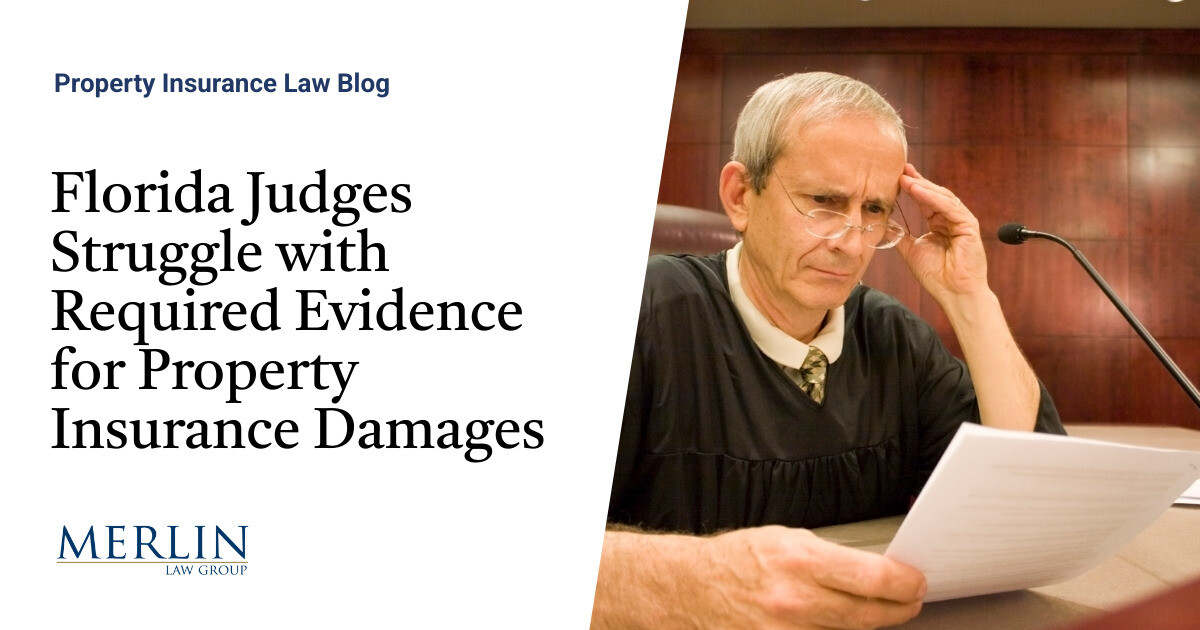Florida’s Second District Courtroom of Attraction did one thing easy and essential in its resolution final week in Weston v. Common. 1 It restored the function of the jury in a traditional roof-claim struggle. The appellate panel reversed a trial decide who made three directed verdicts that had ended the case earlier than jurors might weigh competing proof. Every reversal activates a primary trial precept that when cheap individuals might see the info in another way, judges shouldn’t take the case away from the jury. The courtroom stated so explicitly, reciting the acquainted normal that every one proof and inferences should be seen within the insureds’ favor when testing a directed verdict. With factual disputes riddling the file, the one correct vacation spot was the jury field.
The primary directed verdict fell as a result of the trial courtroom misinterpret what “precise money worth” might embrace beneath this coverage and the file. The owners supplied skilled testimony that greater than 25% of the roof was broken, triggering the Florida Constructing Code’s full substitute requirement; in addition they supplied estimates that accounted for code compliance and matching. The coverage contained ordinance-or-law protection that pays elevated prices required by code to finish repairs, together with work to undamaged parts wanted to complete the job.
That’s exactly the type of proof a jury should weigh when deciding whether or not ACV was underpaid. The trial courtroom leaned on prior precedent to exclude matching and code-compliance prices from ACV, however the Second DCA distinguished it as a result of the Westons’ coverage expressly supplied ordinance-or-law protection and the file contained testimony that the 25 p.c rule utilized. With that testimony within the case, and with competing estimates on the scope and price of restore, there was greater than sufficient for cheap jurors to disagree. Taking that dispute away from them was error.
The second directed verdict collapsed as a result of the courtroom handled the loss-settlement provision as a protection gate fairly than a timing mechanism. Common argued it owed nothing past the token cost until and till the Westons changed the roof and submitted receipts. The appellate courtroom pointed to the statute and coverage language, making clear that preliminary ACV should be paid and remaining substitute advantages are paid as work proceeds—however just for coated claims. When an insurer successfully denies additional protection for the claimed restore, the insured will not be required to entrance the complete price and hope for reimbursement earlier than suing.
The Second DCA relied on its latest resolution in Brito v. Residents Property Insurance coverage Company 2 to make the purpose specific and sensible: The place protection is disputed or denied, the loss-settlement clause doesn’t bar a breach motion or postpone judicial evaluate till after the house owner spends tens of hundreds of {dollars}. Recasting that clause as a protect towards legal responsibility was authorized error.
The third directed verdict couldn’t stand as a result of it rested on a premise that the file undermined, that Common paid the one ACV estimate it had earlier than swimsuit. Common’s company consultant admitted the corporate obtained the Westons’ roof-replacement estimates earlier than litigation; the service merely disagreed with them. Nothing within the coverage required the insureds to ship a specific type of “ACV estimate” to unlock their proper to sue.
The trial courtroom’s reliance on a case the place the insured by no means supplied any estimate in any respect was misplaced. Right here, the insureds supplied estimates, supplied sworn proof of loss, and introduced skilled testimony—greater than sufficient to create factual points for a jury on scope, code triggers, and valuation. Treating Common’s field-adjuster quantity as dispositive short-circuited the fact-finding course of and amounted to a different improper directed verdict.
Pulled collectively, the opinion is a primer on who decides what in a Florida property declare. Juries determine contested info: whether or not injury passes the 25 p.c threshold, whether or not matching is important to finish repairs, whether or not inside rooms had been broken and omitted from the service’s estimate, and what all of it prices. Judges determine the authorized framework: that ordinance-or-law protection can convey code-driven prices inside the payable loss, that the loss-settlement clause regulates cost timing fairly than protection itself, and {that a} plaintiff needn’t rebuild first after the insurer has already stated “no.” On this file, the factual conflicts had been many and materials, so the right course was to let jurors do their job
As somebody who has spent a long time watching these instances from the entrance row, I see Weston as a back-to-basics reminder. Insurance coverage exists to make individuals entire, to not power them into monetary brinkmanship to earn a day in courtroom. If an insurer insists a handful of shingles is all that was harmed whereas the house owner’s engineer and contractor level to a code-triggering roof and water-damaged rooms, a decide shouldn’t preempt the jury’s widespread sense. That’s what the Second DCA restored.
Thought For The Day
“Consultant authorities and trial by jury are the guts and lungs of liberty.”
—John Adams
1 Weston v. Common Prop. & Cas. Ins. Co., No. 2D2024-1340 (Fla. second DCA Oct. 24, 2025).
2 Brito v. Residents Prop. Ins. Corp., 415 So. 3d 252 (Fla. second DCA 2025).

